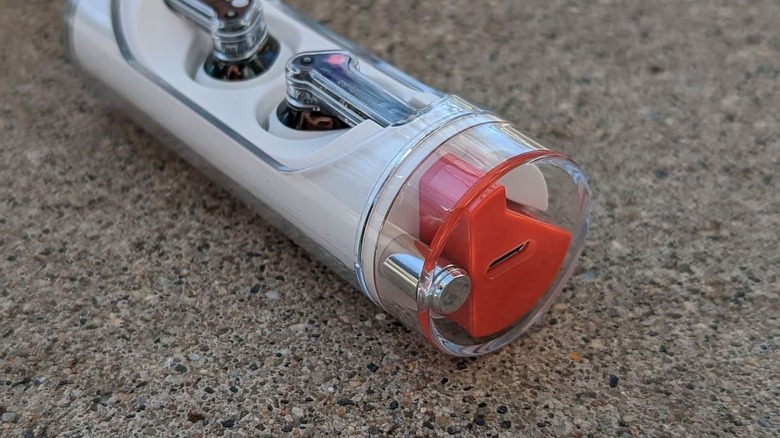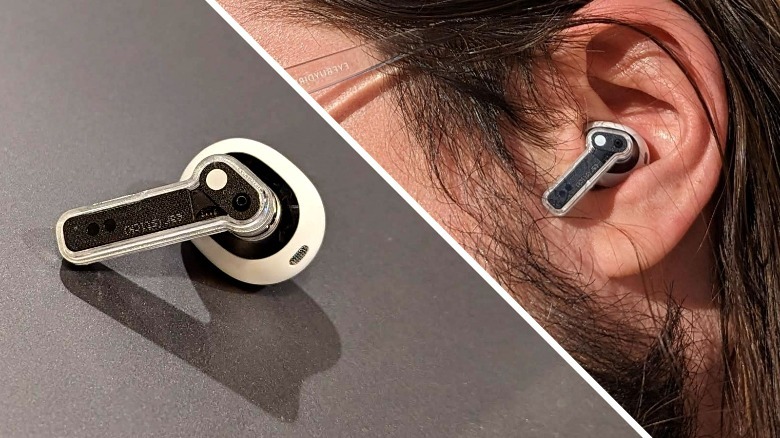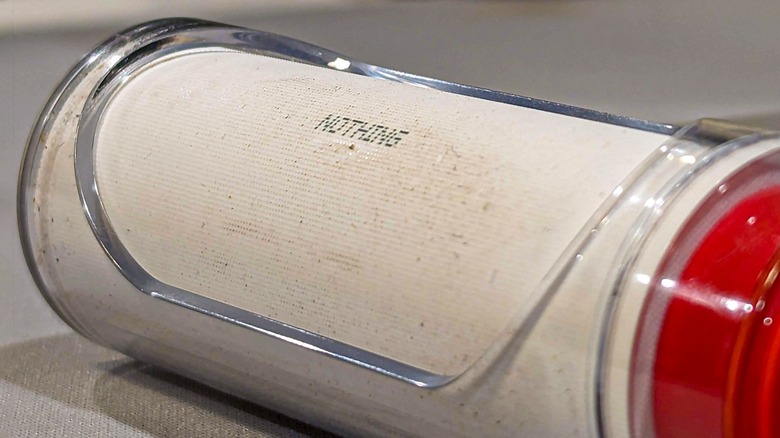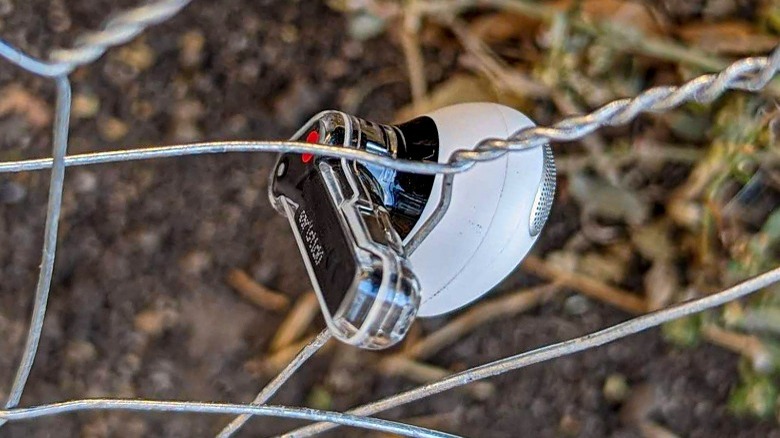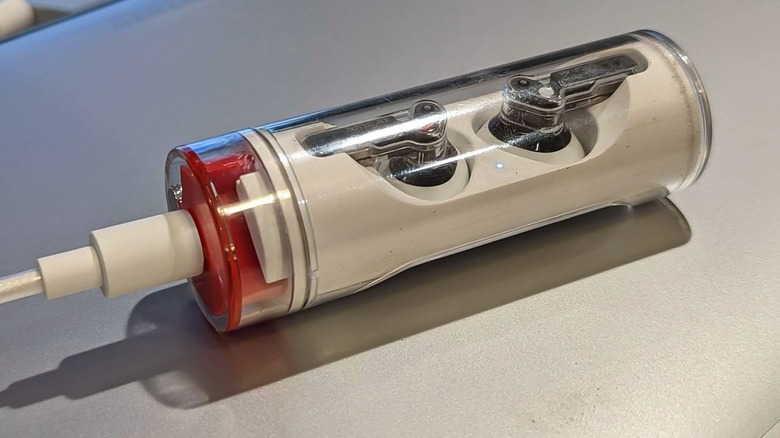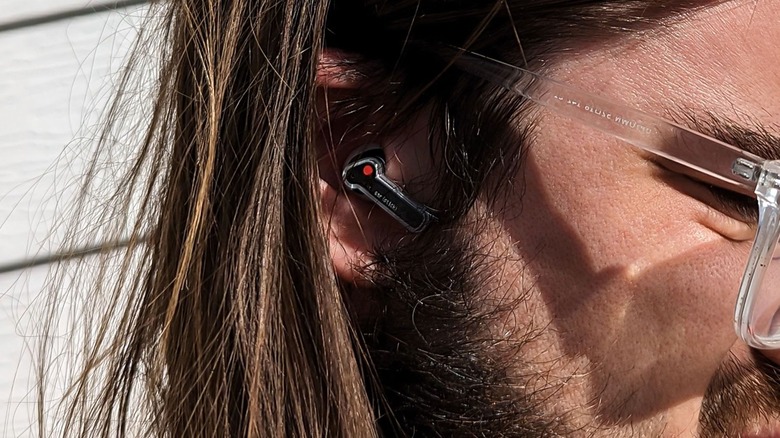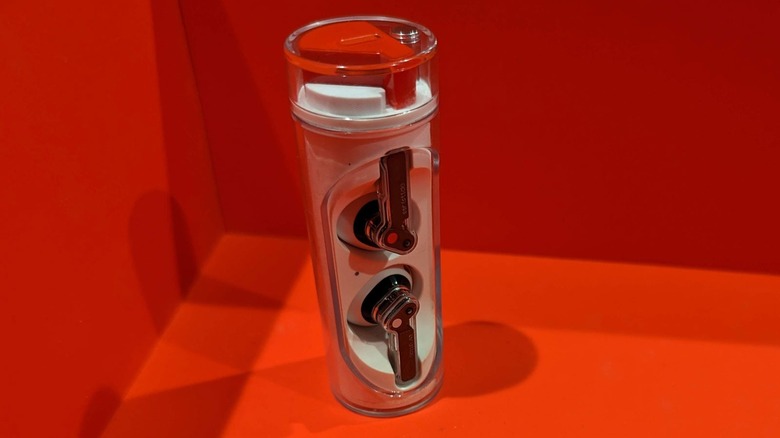Nothing Ear (Stick) Review: Despite One Major Flaw, The Answer Is Clear
- Sound is clean and sharp
- Software is simple and functional
- Design is unique and beautiful
- Battery life is adequate
- Hardware controls are elegant and easy
- Missing deep bass sound
- One size only
- Significant hardware flaw with rogue debris
- No user-friendly option for hardware cleaning
The Nothing Ear (stick) suffers from one hardware design flaw that very nearly overshadows the rest of the product. The audio quality is fine, the battery life is decent, and the look of the buds and the case are unique. But as is sometimes the situation with gadgets with moving parts, including those that cost far more than this pair of earbuds, a single speck of sand can be its undoing.
The design of the Nothing Ear (stick) is fantastic in a vacuum. If we're looking at this device as a prop with which one can snap photos in a studio, it's wonderful. As you'll have undoubtedly seen in Nothing advertisements and promotional materials, Nothing devices have been designed with visual touchpoints aplenty.
When we reviewed the Nothing Phone 1, we had some similar views on the Android smartphone — is the unique design a tradeoff for a suitably solid experience? Or could it be that Nothing's done such an extremely good job at making their products look and feel different from all other rivals, that we're willing to excuse a few flaws?
Industrial Design
The Nothing Ear (stick)'s name focuses on the case in which the earbuds are delivered and charged. It's an adult-thumb-sized piece of hardware with a single physical button, a USB-C port, a tray in which two earbuds can rest and charge via pogo pins, and a single LED indicator. The area where the earbuds rest is surrounded by an outer tube made of transparent plastic that covers and protects the buds.
The design is elegant, beautiful, and unique. The inner tube that cradles the buds has a tactile micro bump pattern that's effectively invisible except under bright light — at least, at first.
The buds are made up of white plastic, black plastic, and clear plastic. The clear plastic, much like the outer tube of the case, reveals the inner elements of each device. Text that reads "ear (stick)" is printed on the black surface under the clear plastic of each earbud.
One earbud has a white dot, the other has a red. Everything about this product suggests that the physical aesthetic was the absolute priority of its creators — with one exception.
The left earbud fits in a wearer's ear in a way in which the text on the side of the device is upside-down. When both worn correctly, the opposite bud displays its text right side up and readable. Given how clean and readable the design is when both buds are at home in their charging case, we see that the designers' priority wasn't necessarily the buds as they appear in the ears of their wearer, but the way the products look encased in their charging stick.
What's the big issue here?
If you use this device (and the earbuds within it) in a controlled environment, it's a beautiful example of daring, innovative, and aesthetically pleasing industrial design. If you plan on using the Nothing Ear (stick) in the wild, there's a decent chance you'll have issues with dust, dirt, and other debris.
I used the Nothing Ear (stick) while mowing my lawn, playing fetch with my dog, and going on a bike ride. I did not roll in dirt or otherwise place the (stick) in a pile of sand. The photos I captured for this review show the closest the buds and the (stick) came to the ground, and they survived without a scratch. The (stick) also survived the photography process without any newly-embedded tagalong pieces of debris under its moving exterior casing.
It was only after a couple of brief trips in the pocket of my jeans that the Nothing Ear (stick) became dirtied. While it is possible to do some cursory cleaning of the area that's allowed to be uncovered by the negative space in the tube, the parts to the left and right of the tray can quickly become rings of yuck. There is no officially sanctioned way to open the Nothing Ear (stick) in order to remove dust or dirt from the space between the underside of the earbud tray and the plastic tube that surrounds it.
A single speck of debris also became lodged in the inaccessible zone opposite the USB-C plug side. There, it made quick work of the interior of the plastic tube, scraping a ring as the device spun. When asked whether there was a way to remove this highly-visible debris before it could do damage, a Nothing representative told SlashGear that "there is currently no way to take the charging case apart for cleaning."
Sound Quality
If we ignore the debris, we've got a rather fine pair of wireless earbuds in our hands. They don't offer active noise cancellation (ANC) and they're not particularly big on bass, but they do provide a sound that's to be expected at this price level and with the 12.6mm dynamic drivers Nothing has used.
Nothing Ear (stick) earbuds come in one size, and they do not have the rubbery acoustic seals that come with competing buds. Instead, the design of the buds is such that they're meant to sort of rest right in the crook of your ear. If you have an irregular ear, such that your ear's tragus or antitragus are especially outward-facing, you may have issues with keeping the buds in place
I was skeptical — just about as skeptical as I always am when I'm faced with a pair of earbuds or earphones with no auditory seal. I was pleasantly surprised by how well the Nothing Ear (stick) earbuds stayed in place in my ears and delivered a decent range of sound.
If you're a big fan of deep bass, Nothing Ear (stick) earbuds are not for you. Due at least in part to the way these buds sit in your ear, they don't bring thunderous slamming bass beats to your brain. The audio you get with Nothing Ear (stick) earbuds is sharp and clean. If you're listening to broadcasts, podcasts, and music focused on lyrics, these earbuds perform with great aplomb.
If you want a very similar set of earbuds that cost nearly the same and deliver approximately the same sound quality with the added benefit of specific focus on staying put in your ears while you're actively moving around, take a peek at the Pixel Buds A-Series. If you want to hit up the higher end of the earbuds scale with top-quality sound, noise cancellation, and battery life, I'd recommend checking out Samsung's Galaxy Buds 2 Pro, Apple's AirPods Pro (2022), or Google's Pixel Buds Pro, depending on which sort of phone you're planning on using them with.
Battery Life
With one full charge, the earbuds in the Nothing Ear (stick) lasted approximately 6-7 hours at a time in our tests. The charging case provides a hearty bit of recharge itself, providing another 20+ hours. The longest we got the buds to last (including a recharge with the case) was a total of 28 hours.
The charging case itself is recharged via a USB-C port, and there is no wireless charging to be found. At $99, though, I think that's a not-unreasonable compromise.
Turning the smaller part of the tube while holding the larger part allows the inner section to turn and uncover the earbuds within. It also awakens the buds and the case, preparing them to connect to a nearby Bluetooth-enabled device (likely a smartphone). The silver button on the same end of the case as the USB-C port also awakens the case and prepares it for pairing.
The earbuds rest in the case and can be removed and replaced only when the surrounding clear plastic tube is perfectly aligned. The buds are also held in place by magnetic elements, and power is transferred from the case to the buds via pogo pins.
Connectivity and Software
Connectivity with an Android device is swift and clean. The first time you open the Ear (stick) case, a notification will appear on your Android device (assuming it's unlocked), and your connection should take place in an instant. After that, a spin to uncover the buds will reconnect them to your Android device, while another spin (while they're cradled in the case) will disconnect.
Touchpads can be seen and felt in the arms of the earbuds, and the controls are easy enough to figure out by trial-and-error. Of course, there are instructions if you like, but a single, double, or triple-pinch for pausing and playing and track skipping, and a pinch and hold for volume up or down (left for down, right for up), makes audio control a simple affair.
The software Nothing has for these buds on an Android device — not just a Nothing Phone, but most any Android device — is simple and useful. The first time you connect the earbuds to your smart device, then the app, the software gives you a brief overview of the hardware controls, then produces a set of equalizer controls and options for hardware controls.
The equalizer system works well, and allows the user to choose from a variety of presets and to access sound zones with granular controls. The touch (squeeze) controls on the earbuds have a preset set of controls, but can be set to activate other functionality as set by the software. The whole experience is a perfect balance between usability and functionality.
Nothing Ear (stick) Verdict
Nothing Ear (stick) is an interesting proposition. The audio hardware is worth the $99 price of entry, even if that used to be enough to get the — now $149 — Nothing Ear (1) earbuds with ANC. It's hard not to feel a little uncomfortable at this price shuffling, given the features you now no longer get.
What's frustrating and charming about the Nothing Ear (stick) is its charging case, a daring piece of design, that's also it's biggest flaw. If only there were a way to easily remove the plastic tube from this case in order to clean it once it becomes compromised with dust and dirt. If only this product's design didn't betray itself by making a significant, very visible part of itself inaccessible to the end user.
It was painful to discover this flaw in a product with such an appealing industrial design. It should speak to the importance of the design, then, alongside the quality of everything else, that I can still say the Nothing Ear (stick) is well worth its price. If not for the functionality, then at least for the beauty of the product and its presentation.

